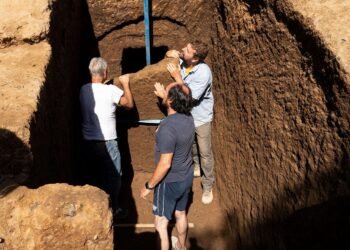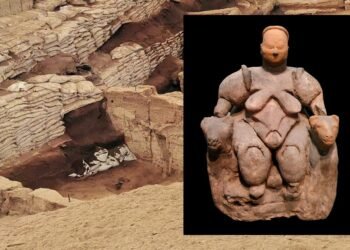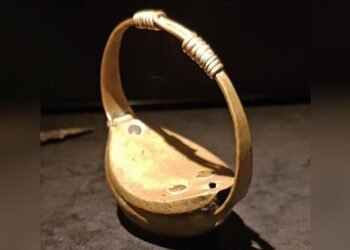Archaeologists in the Steinacher area of Gebenstorf, Canton of Aargau, have uncovered a Roman settlement much larger than previously believed. The discovery comes ahead of a major development project in the area, prompting the Cantonal Archaeology Department to conduct extensive excavations to salvage the ancient remains.

The excavation, led by the Aargau Archaeological Service, began in early April and covers an area of 3,200 square meters. Situated on the banks of the Limmat River, the Roman settlement site features well-preserved stone buildings.
Initial excavations, preceding the larger-scale dig, unearthed wall foundations, Roman building debris, and various artifacts on the construction plot earmarked for a residential development with an underground parking garage. This area, known as “Steinacher,” lies approximately 2.2 kilometers from the Vindonissa legionary camp.
Historical records dating back to the 17th century mention sporadic findings in the region, with targeted investigations between 2017 and 2023 confirming the existence of a sprawling Roman residential complex spanning the construction site and its surroundings.
Of particular interest is the proximity of the settlement to the Vindonissa camp. This distance, consistent with other Roman settlements, suggests a deliberate planning strategy, known as “extra leugam” in Latin, where civilian residences were established at a regulated distance from military garrisons.
Notably, an ancient cemetery containing gravestones of soldiers from Vindonissa was located nearby, suggesting a deliberate spatial arrangement in accordance with Roman military regulations. The discovery underscores the importance of understanding the relationship between Roman military camps and surrounding civilian settlements, a topic of ongoing debate among international researchers.
The planned construction project, which includes the development of residential buildings and an underground parking lot, necessitates the careful documentation and preservation of the archaeological finds. The excavation is being conducted in two phases, scheduled from April to November 2024 and March to May 2025. Once completed, the construction perimeter will be released for new development.






















